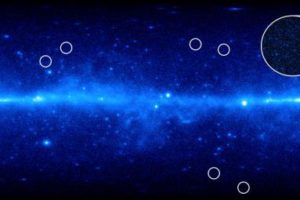physical review letters
Ultra-Simple Desktop Device Slows Light to a Crawl
Though Einstein put his foot down and demanded that nothing can move faster than light, a new device developed at the University of Rochester may let you outpace a beam by putting your foot down on the gas pedal. At 127 miles per hour, the light in the new device travels more than 5 million times slower than normal as it passes through a ruby just a few centimeters long. Instead of the complex, room-filling mechanisms previously used to slow light, the new apparatus is small and, in the words of its creator, “ridiculously easy to implement.” Such a simple design will likely pave the way for slow light, as it is called, to move from a physical curiosity to a useful telecommunications tool. The research is being published in this week’s Physical Review Letters.
Researchers create highest resolution optical image ever
Researchers at the University of Rochester have created the highest resolution optical image ever, revealing structures as small as carbon nanotubes just a few billionths of an inch across. The new method should open the door to previously inaccessible chemical and structural information in samples as small as the proteins embedded in a cell’s membrane. The research appears in today’s issue of Physical Review Letters.
Evolution of Galaxy-Spanning Magnetic Fields Explained
Researchers have uncovered how giant magnetic fields up to a billion, billion miles across, such as the one that envelopes our galaxy, are able to take shape despite a mystery that suggested they should collapse almost before they?d begun to form. Astrophysicists have long believed that as these large magnetic fields grow, opposing small-scale fields should grow more quickly, thwarting the evolution of any giant magnetic field. The team discovered instead that the simple motion of gas can fight against those small-scale fields long enough for the large fields to form.
Heisenberg’s revenge: Energy need may cap size, ability of quantum computers
The energy required to create an accurate quantum computer may limit the ability of scientists to make these novel devices small, fast, cheap and efficient, says a University of Arkansas researcher. Quantum computing relies on using single atomic particles as units for information storage. Manipulating this information requires pulsed electromagnetic fields?which contain energy. The researcher found that the energy needed to perform a calculation is inversely proportional to the error rate: In other words, more energy means less uncertainty.
Physicists Puzzle Over Unexpected Findings in ‘Little’ Big Bang
Scientists have recreated a temperature not seen since the first microsecond of the birth of the universe and found that the event did not unfold quite the way they expected. The interaction of energy, matter, and the strong nuclear force in the ultra-hot experiments conducted at the Relativistic Heavy Ion Collider (RHIC) was thought to be well understood, but a lengthy investigation has revealed that physicists are missing something in their model of how the universe works.
Experiment could reveal ‘extra dimensions,’ exotic forces
Physicists have devised a new experiment that will be used in the quest for exotic forces in nature and “additional spatial dimensions.” The researchers have shown what they say is a new way to measure a phenomenon known as the Casimir effect ? findings that also could have implications for the design of microscopic machines that contain tiny parts on the size scale of nanometers ? or billionths of a meter. The Casimir effect, predicted in 1948 by Dutch physicist Hendrick Casimir, is a force that pushes together two plates of metal placed near each other in empty space ? or a vacuum. The closer the plates are to each other, the stronger the force.

